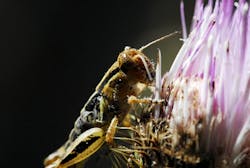As it happened, my father had treated his feed corn with a commercial herbicide that was a derivative of Agent Orange, a defoliant used at the time in the Vietnam War. Agent Orange had been linked to birth defects in Vietnamese children. And twin births are a form of birth defect in cows. Putting two and two together, my father switched herbicides. As I recall, we only had one set of twins next year.
In Vietnam, the military sprayed defoliating chemicals at an average concentration of 13 times the recommended USDA application rate. Similarly, I now suspect our calving experience arose because we inadvertently overapplied the chemical.
I recalled this story when I realized that Silent Spring, the book credited with launching the environmental movement, recently reached its 50th anniversary of publication. Technologists will note that Silent Spring also gave antitechnology activists new life. Its author, Rachel Carson, got at least one thing right: The pesticide DDT had been overused when the book published in 1962. For better or worse, the book is credited with getting that chemical banned.
But Carson also made a number of other pronouncements that have turned out to be wrong. It is worth reviewing a few of them for lessons learned.
Carson was big on preserving natural habitats. Perhaps the biggest hole in her argument that critics have pointed out over the years is that pesticides and herbicides play a part in preserving natural habitats by reducing the amount of land and other resources necessary to grow crops. They are key, for example, in no-till farming. No-till eliminates erosion and loss of soil nutrients from wind and water action that comes from running tractors through fields numerous times to kill weeds.
But perhaps most interesting is Carson’s claim that man-made carcinogens caused a majority of cancers and that cancer could eventually strike “one in every four” Americans. So you would expect to see cancer rates trending upward if synthetic pesticides were a cause. But once figures are adjusted for our aging population, clinicians say this hasn’t happened. In fact, cancer death rates for nonsmokers up to 69 years old declined from the 1950s onward.
Epidemiologists have estimated that no more than 5% of all cancer deaths are due to pollution and that most cancer deaths arise from tobacco and diet. Moreover, research has also shown that 99.99% of carcinogens we ingest are natural, manufactured by plants to defend against pests.
Still, you have to give Rachel Carson credit for raising sensitivities to environmental issues. If her predictions about cancer rates sound overly dire, it is helpful to know that she was dying from breast cancer when she was writing her book. That kind of reality has a tendency to color one’s outlook on things.
About the Author
Leland Teschler
Lee Teschler served as Editor-in-Chief of Machine Design until 2014. He holds a B.S. Engineering from the University of Michigan; a B.S. Electrical Engineering from the University of Michigan; and an MBA from Cleveland State University. Prior to joining Penton, Lee worked as a Communications design engineer for the U.S. Government.

